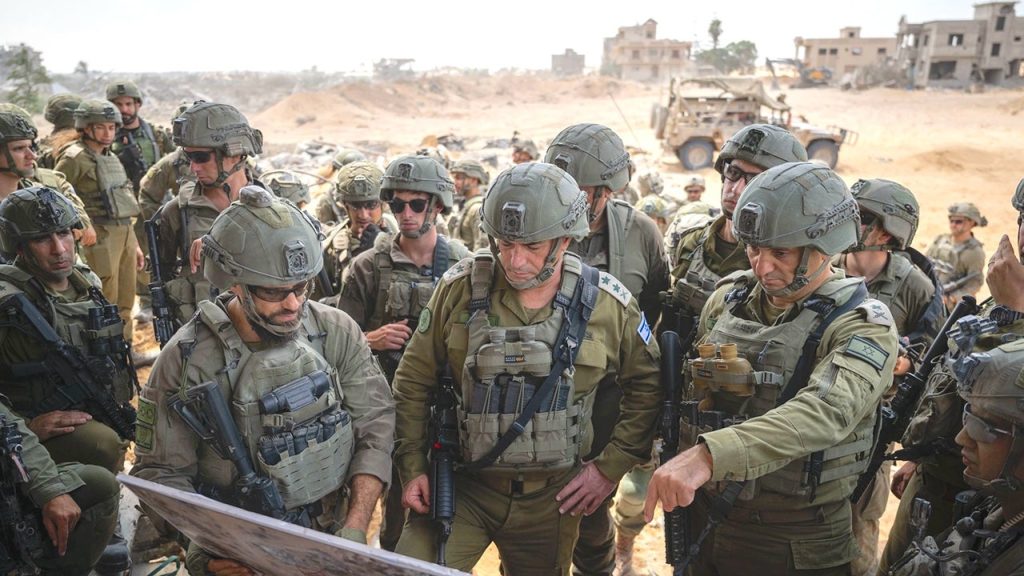Israel Mobilizes for Gaza City Offensive: A Defining Moment in the Hamas Conflict
In a dramatic escalation of the Israel-Hamas conflict, Israeli forces are positioning themselves on the outskirts of Gaza City, preparing for what military experts describe as potentially the most challenging urban warfare operation in Israel’s history. The Israeli security cabinet has approved “Gideon’s Chariots B,” deploying an unprecedented five IDF divisions and calling up approximately 60,000 reservists. This mobilization represents more combat power than Israel has deployed across the entire Gaza Strip thus far, signaling the strategic importance of capturing Gaza City, which stands as the heart of Hamas’s stronghold and command structure.
The urban battlefield presents extraordinary challenges that distinguish this operation from previous Israeli military campaigns. John Spencer, chair of urban warfare studies at the Madison Policy Forum, emphasizes that Gaza City’s density makes it uniquely difficult terrain. The city’s crowded neighborhoods, refugee camps, high-rise buildings, and – most critically – its elaborate underground tunnel network create a multi-dimensional battlefield that favors defenders. Unlike previous conflicts, Hamas has had years to prepare defensive positions specifically designed to counter Israeli tactics. These semi-circular defense systems, combined with the extensive tunnel network, allow Hamas fighters to move undetected between positions, avoid airstrikes, and potentially hide hostages. This subterranean dimension adds complexity that even experienced Israeli commanders acknowledge they cannot fully understand until they encounter it firsthand.
Israeli military planners appear to have adopted a methodical, high-firepower approach that prioritizes force protection while accepting a slower operational tempo. A former senior Israeli security official, speaking anonymously, described the tactical approach as “destroy everything first” – using air force bombs, massive charges, and detonating streets from afar before ground forces advance. This cautious, “telescopic” approach reflects lessons learned from recent urban combat experiences and acknowledges the potential for significant casualties on both sides. The IDF has made rapid adaptations in drone warfare, robotics, and specialized tunnel-clearing tactics, but military experts emphasize that no technological advantage can fully mitigate the inherent dangers of urban combat. Gadi Shamni, former commander of the Gaza Division, notes that even when tunnels are destroyed, Hamas can rebuild them quickly, creating an ongoing challenge for occupying forces.
The presence of civilians and hostages creates profound ethical and tactical dilemmas for Israeli forces. Military experts estimate that even with evacuation orders, approximately 10% of civilians typically remain in combat zones – potentially 100,000 people in Gaza City’s case. Hamas’s potential use of human shields and the possible positioning of hostages in combat zones further complicates Israeli operations. The dual objectives of defeating Hamas and rescuing hostages create inherently contradictory military goals – defeating Hamas requires overwhelming force, while hostage rescue demands precision and restraint. Spencer describes this as a “calculated risk,” weighing the danger of military action against the certainty that hostages face continued captivity under deteriorating conditions. The Israeli military must balance these competing imperatives while operating under intense international scrutiny regarding civilian casualties.
The scale and complexity of clearing Gaza City cannot be overstated, with military experts drawing comparisons to previous urban battles to illustrate the challenge. Spencer points to the 2004 battle for Fallujah in Iraq, where U.S. Marines spent two weeks methodically clearing approximately 68,000 structures – a massive undertaking even with overwhelming military superiority. Gaza City presents a significantly larger and more complex environment. Military experts estimate the operation could last months, with surface-level clearing potentially taking two months, followed by the more dangerous and time-consuming process of clearing the tunnel network. Weather considerations also factor into planning, with Israeli commanders aware that winter conditions beginning in January could further complicate operations. The former Israeli security official noted that this measured pace also creates potential negotiation windows at each operational stage.
The long-term strategic implications of the Gaza City offensive remain uncertain, with experienced Israeli commanders expressing concern about the sustainability of any military gains. Shamni warns that the dual objectives of defeating Hamas and returning hostages may prove irreconcilable, potentially leading to years of drawn-out fighting. Military control of physical territory, while important, does not necessarily translate to eliminating Hamas’s organizational capacity or preventing its eventual return. This reality has created debate within Israeli security circles about the achievable endgame. Spencer argues that despite the risks, military pressure represents “the last resort” for addressing the hostage crisis, as “without conquering Gaza City, Hamas will continue to hold a sanctuary.” However, even successful military operations leave unanswered questions about governance, reconstruction, and preventing Hamas’s resurgence – challenges that extend well beyond the immediate battlefield concerns now facing Israeli forces on Gaza City’s doorstep.


